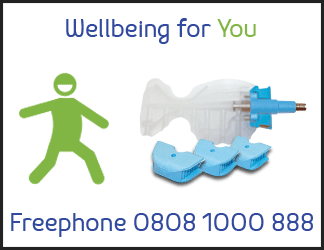
Eyes may be the windows to your soul, but they’re also the keys to improved posture. Structurally speaking, your eyes rest in your head which rests on your neck then your shoulders then your trunk. In other words, they are all interconnected.
Your body requires visual input to enable it to maintain balance and gauge spatial awareness. When the brain doesn’t receive adequate visual input, for instance through insufficient lighting and magnification, the body will compensate by assuming unnatural positions such as tilting your head forwards or twisting your neck to achieve better vision, in turn putting pressure on your head, neck and spine. By bending and twisting like this, musculoskeletal problems are quick to take hold, particularly back ache, shoulder pain and neck strain, let alone eye fatigue. Physical pain can also be psychologically detrimental, so finding the best posture and maintaining it should be top priority for clinicians wishing to sustain a good, comfortable working life.
Comfort and correctness
Regardless of age or quality of vision, every clinician could benefit from a little help in this area when treating patients. This is where magnifying loupes are tremendously important. Not only do they improve your field of view, they also correct and stabilise your posture by maintaining a set focal range. Indeed, those using loupes tend to display a more upright posture, reducing pressure on the head, neck and spine.
Understanding the correct distance
The ideal operating distance (depending on height and stool used) to maintain a correct posture and work comfortably is approximately 450mm, but it can be difficult to see the area of work at this distance, so in reality the distance between your eyes and the mouth of the patient is closer to 325–350mm. Using magnifying loupes solves this problem, making it far easier to see the patient’s mouth from an ergonomically safe distance.
Getting the right angle
The angle of declination is a very important specification when selecting loupes. Your loupe supplier should be able to create custom-made loupes with the correct angle of declination best suited to you. The resulting improved posture removes the risk of back and neck strain, eye fatigue and associated discomfort.
Getting the right magnification
The recommended magnification is between 2.5x and 3.5x, as these levels give an optimal depth of field allowing freedom of movement whilst keeping the subject in focus; experienced loupe users may progress to higher magnifications up to 5.7x. Magnification enhances vision, increases clinical awareness and shows up details and information not visible without it.
Light it up!
Without additional LED lighting, loupe users’ pupils dilate due to reduced light, in turn reducing depth of field. With insufficient light, critical details such as tiny but significant carious legions can be missed. LED lighting is mandatory with higher magnification and many experts consider it essential with any magnification. Connecting LED lights to your loupes instantly increases your clarity of vision of the working field. When light takes the strain, your eyes can relax.
Ultimately, by wearing correctly fitted loupes with the right level of magnification plus attached lighting, dentistry as a profession can become more relaxing as your posture improves and working becomes more comfortable.
To find out more about selecting the right pair of loupes for you, click here and we’ll be in touch with our recommended solutions.
Twitter: @evidentdental
Facebook: Evident
#livelifedental
Image attribution: eddiecoyote






Excellent read, I just passed this onto a friend who was doing a little research on that. And he just bought me lunch since I found it for him smile Thus let me rephrase that: Thank you for lunch!